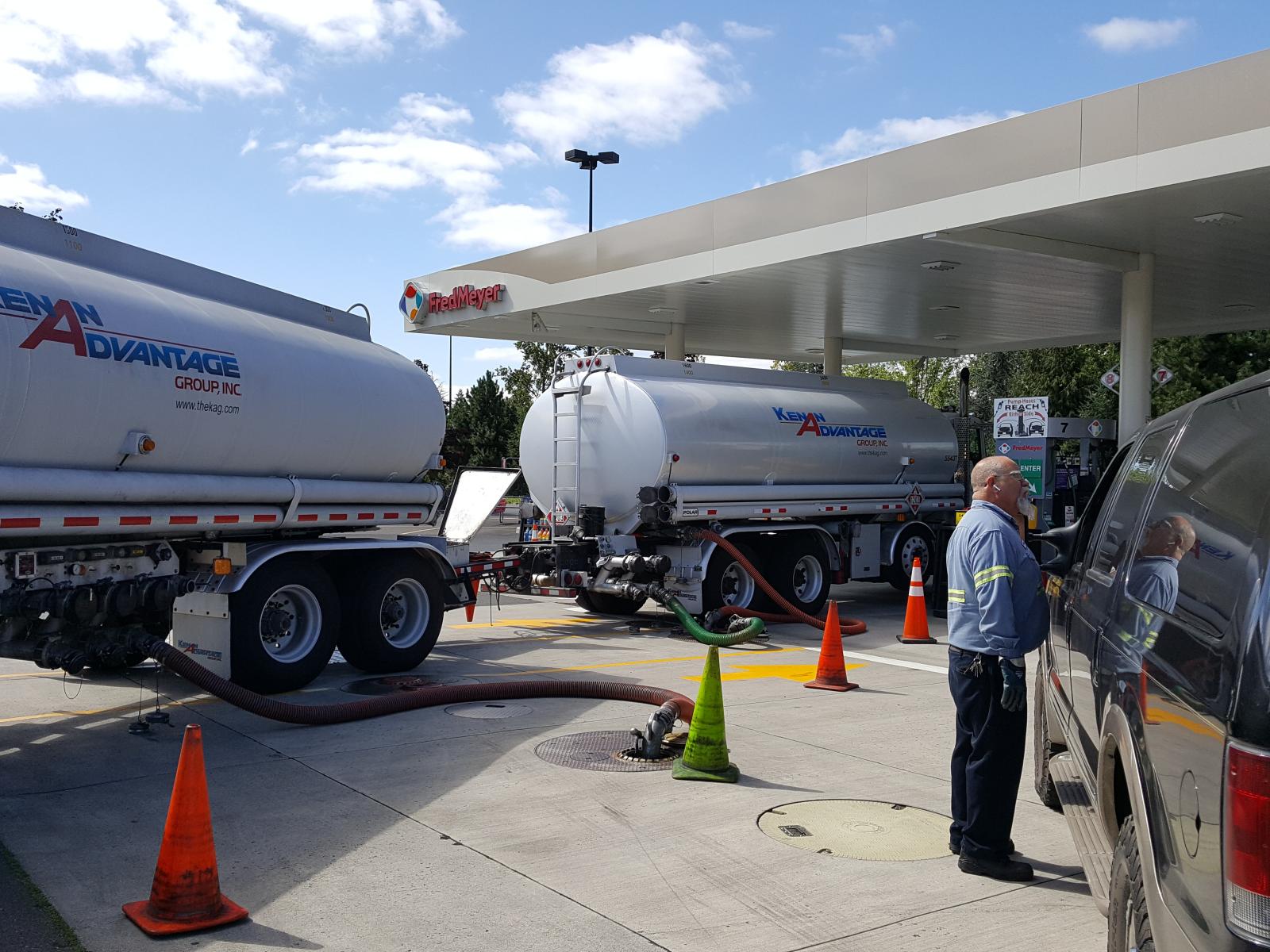PNNL and Oregon Partner to Study State Energy Security Risks
Study will help Oregon better prepare for changing future demands for finished gasoline

A fuel supplier delivers gasoline to a gas station in Oregon in the days surrounding the 2017 total solar eclipse. State authorities worked with fuel delivery companies to identify additional delivery routes and times to ensure adequate supply of fuel for the influx of eclipse viewers.
(Photo: Oregon Department of Energy)
Pacific Northwest National Laboratory (PNNL) and the Oregon Department of Energy (ODOE) are collaborating on a pilot project to evaluate risks to petroleum fuel infrastructure, distribution, and supply chains and compounding effects from transportation trends.
Oregon relies extensively on Washington refineries and pipelines for petroleum supplies. According to ODOE’s 2024 Biennial Energy Report, the transportation sector is the largest share of energy use in Oregon—and petroleum-based products accounted for 91 percent of the transportation fuel consumed in 2022. At the same time, Oregon is leading efforts to increase adoption of zero emission vehicles and has a target that 100 percent of all new vehicles sold annually will be zero emission by 2035. This may shift demand for traditional vehicle fuels, reliance on gasoline, and could ultimately affect availability and price of fuel. The Oregon Energy Security Plan, published in September 2024, builds a strong case for the state to give acute attention to fuel supply chain.
The Oregon pilot investigation, sponsored by the Department of Energy’s Office of Cybersecurity, Energy Security, and Emergency Response, is intended to be extensible to states across the country.
“As states work to implement their energy security plans, we want to help them take the next step in responding to priority risks,” said Megan Levy, project manager of state, local, tribal, and territorial energy security planning with the Office of Cybersecurity, Energy Security, and Emergency Response. “Analyzing complex energy security risks on a large scale can complement state efforts. The Oregon study serves as a model for other states balancing regional fuel dependency with transportation electrification trends.”
PNNL will produce analysis that synthesizes current and projected transportation fuel dynamics, supply chain risks, and risk comparators with relevant sectors, such as transportation electrification. With analytical support, ODOE and its partners can target efforts to ensure all Oregonians and the infrastructure they rely upon are less vulnerable, less likely to be disrupted, and managed well through changing future demands for finished gasoline.
“The Oregon Department of Energy has a long history of evaluating and mitigating risks associated with our petroleum fuel supply, and thanks to our new energy security plan, the state advanced our knowledge about these risks,” said Maxwell Woods, Assistant Director of Nuclear Safety and Emergency Preparedness, who is responsible for emergency planning and response coordination for fuels at ODOE. “Our partnership with PNNL allows us to look regionally at the supply chain and refinery economics, evaluate our risks with analytical insight, and weigh energy security effects on Oregonians. This study will provide meaningful guidance and encourage discussion with interested parties to further strengthen Oregon and the region’s energy security.”
The study, “Multi-Sector Analysis for Electric and Petroleum Fuels: A Pilot Project for Oregon” will leverage existing modeling and frameworks from a recent 2024 sector coupling analysis (part one) (part two), supported by the Department of Energy’s Office of Electricity.
“As a national laboratory with global reach but local roots, PNNL is thrilled to take our advanced system modeling and analytics out of the lab and into the real world,” said Rebecca O’Neil, advisor of Electricity Infrastructure at PNNL. “Our staff and institutions see a virtuous cycle to partnering with state agencies, who then work hard to ensure our security and well-being.”
Published: December 18, 2024